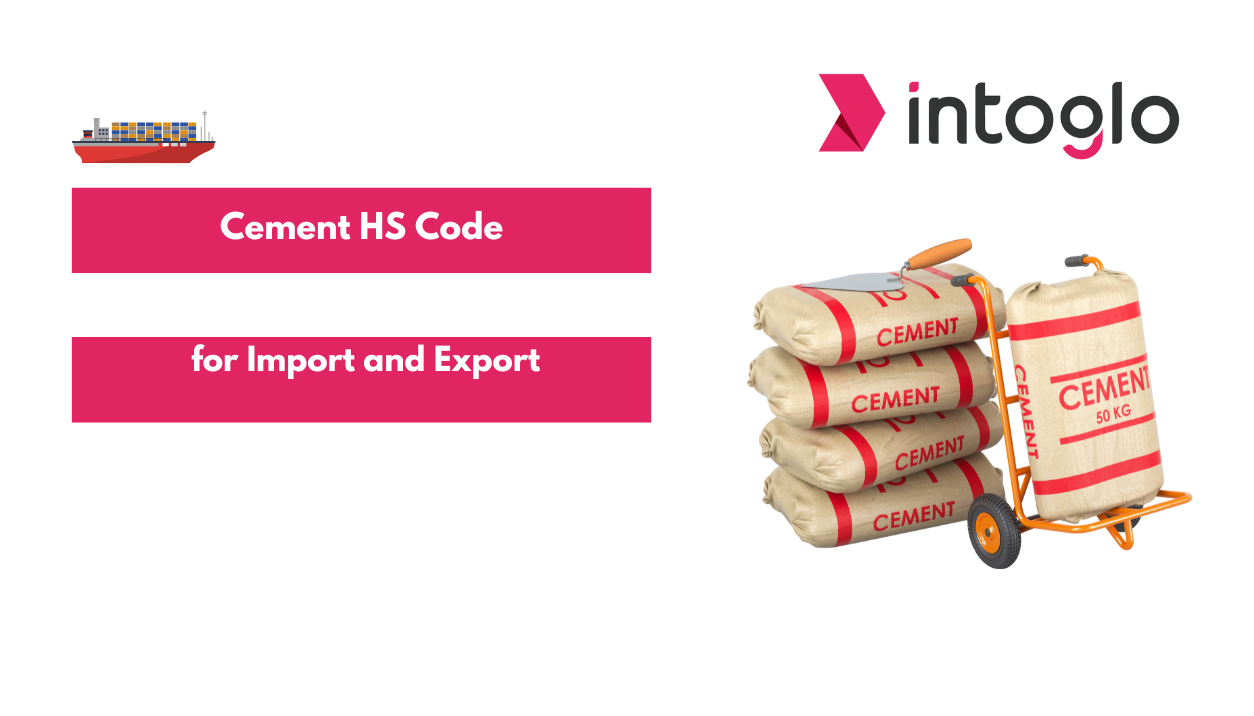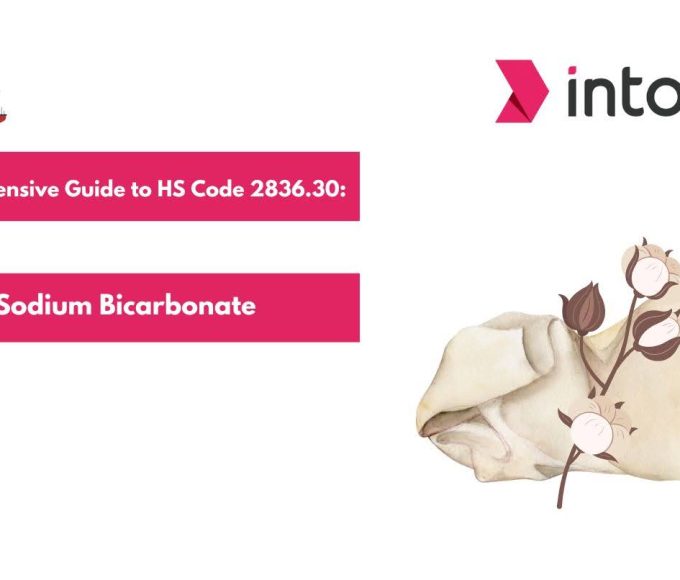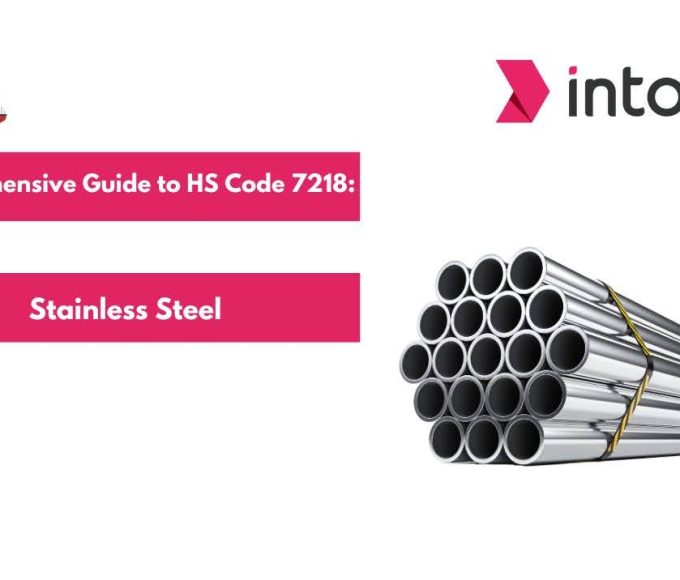Cement, a crucial construction material, plays a key role in the global economy. The Harmonized System (HS) Code for cement is 2523, which encompasses a range of cement types, including 252310, 252321 and other specialized forms of cement. This classification is vital for international trade as it helps standardize the process of importing and exporting cement.
The HS Code system facilitates accurate customs clearance, tariff application, and international trade agreements. By using this code, businesses ensure compliance with international regulations, enhancing efficiency in the movement of cement products across borders and fostering smooth global trade operations.
TL;DR
- The HS code for cement is typically “2523,” which covers hydraulic cement and clinker.
- Accurate HS code classification helps avoid customs delays and ensures correct tariff rates for cement.
- The HS code for cement may vary depending on the specific type (e.g., Portland cement, white cement).
- Understanding the correct HS code ensures smooth import/export processes and accurate tax calculations.
- Cement imports and exports may be subject to additional regulatory requirements, such as quality certification.
Key Industries Using HS Code 2523 Goods
The cement and clinker products classified under HS Code 2523 are essential to various industries. Below are some key industries that heavily rely on these materials:
1. Construction & Infrastructure
The construction industry is the largest consumer of cement and clinker products under HS Code 2523. Portland cement, aluminous cement, and other hydraulic cements are fundamental in building infrastructure such as roads, bridges, tunnels, and dams. Residential and commercial real estate projects also rely heavily on these materials for foundations, walls, and flooring.
2. Precast Concrete & Ready-Mix Industry
Precast concrete manufacturers and ready-mix plants use cement to produce structural elements such as beams, slabs, and pipes. The controlled environment of precast plants ensures high-quality concrete components that are then transported to construction sites. Ready-mix concrete, which is prepared off-site and delivered in transit mixers, depends on different types of Portland cement to meet project-specific strength and durability requirements.
3. Oil & Gas Industry
The oil and gas industry uses specialized cement for well cementing during drilling operations. High-alumina cement, known for its heat resistance and rapid setting properties, is particularly valuable in oil rigs and refineries. Offshore platforms also require cement with strong binding properties to withstand extreme marine conditions. Given the technical requirements of the sector, cement formulations are carefully selected based on pressure, temperature, and exposure conditions.
4. Manufacturing & Heavy Industries
Cement-based refractory materials are crucial in industries like steel, glass, and ceramics, where high-temperature furnaces and kilns are used. High-alumina refractory cement is applied in furnace linings and incinerators to ensure thermal resistance and durability under extreme heat conditions. Industrial manufacturers rely on cement products for machine foundations, factory flooring, and equipment installations due to their load-bearing strength.
5. Infrastructure Repair & Maintenance
In addition to new construction, cement plays a vital role in repairing and maintaining existing infrastructure. Roads, bridges, and public buildings often require specialized cement formulations for crack repairs and reinforcement. Quick-setting cements are used in emergency road patching and structural reinforcements, minimizing downtime in high-traffic areas..
6. Marine & Port Construction
Portland and sulphate-resistant cements are widely used in marine infrastructure projects such as docks, seawalls, and breakwaters. These structures must withstand constant exposure to saltwater, waves, and harsh weather conditions. Underwater construction also demands cement formulations that set and harden effectively in submerged conditions, ensuring durability in maritime environments.
What Goods are Covered Under HS Code 2523?
HS Code 2523 pertains to various types of cements, including Portland cement, aluminous cement, slag cement, supersulphate cement, and similar hydraulic cements, whether or not colored or in the form of clinkers.
Subcategories under HS Code 2523:
- HS Code 2523.10: Cement clinkers.
- HS Code 2523.21: White Portland cement, whether or not artificially colored.
- HS Code 2523.29: Other types of Portland cement, including:
- HS Code 2523.29.10: Ordinary Portland cement, dry.
- HS Code 2523.29.20: Ordinary Portland cement, colored.
- HS Code 2523.29.30: Portland pozzolana cement.
- HS Code 2523.29.40: Portland slag cement.
- HS Code 2523.29.90: Other.
- HS Code 2523.30: Aluminous cement.
- HS Code 2523.90: Other hydraulic cements, including:
- HS Code 2523.90.10: Sagol; ashmoh.
- HS Code 2523.90.20: High alumina refractory cement.
- HS Code 2523.90.90: Other.
These classifications ensure accurate customs documentation and compliance with international trade regulations.
Need to find the right HS Code for your shipment? Use Intoglo’s HS Code Lookup & Finder Tool for quick and accurate tariff classification. If you are an exporter, this tool helps you navigate global trade regulations effortlessly. Try it now and simplify your shipping process!
Quick Reference Table for India to US Export/Import
| HS Code | Product Type | Basic Duty (General) |
| 2523.10 | Cement clinkers | Free |
| 2523.21 | White Portland | Free |
| 2523.29 | Other types of Portland cement | Free |
| 2523.30 | Aluminous cement | Free |
| 2523.90 | Other hydraulic cements | Free |
Classifying your cement shipments correctly is crucial for smooth customs clearance and compliance. Intoglo’s AI-powered HS Code Scanner helps you find the HS code along with tariffs, reducing errors and avoiding shipment delays. Whether you’re exporting Portland cement, clinkers, or other cement types, our tool ensures quick and hassle-free classification. Try it now and streamline your export process: Intoglo HS Code Scanner.
Trade and Market Statistics
Cement is one of the most traded commodities in the global construction and infrastructure industry. Its demand is driven by rapid urbanization, government investments in infrastructure, and the growth of the real estate sector. The global cement trade is influenced by factors such as transportation costs, environmental regulations, and fluctuating raw material prices.
Free trade agreements, tariffs, and regional economic policies also play a crucial role in shaping cement imports and exports. With advancements in technology and sustainable alternatives, the industry is also witnessing a shift toward eco-friendly cement production methods to reduce carbon emissions.
Top Exporters of Cement (2023-2024)
The global cement export in 2023 is characterized by a few dominant players, with Vietnam leading the pack. Here are the top exporters of cement based on export values:
| Rank | Country | Export Value (in USD) |
| 1 | Vietnam | $1.6 billion |
| 2 | Turkey | $1.4 billion |
| 3 | Egypt | $773.6 million |
| 4 | Germany | $689.4 million |
| 5 | Canada | $565.5 million |
Top Importers of Cement (2023-2024)
In 2023, the top importers of cement globally are as follows:
| Rank | Country | Import Value (in USD) |
| 1 | United States | $2.7 billion |
| 2 | France | $626.5 million |
| 3 | United Kingdom | $610 million |
| 4 | Philippines | $551.9 million |
| 5 | Netherlands | $501.7 million |
India’s Growing Presence in the Global Cement Export Market
Although India is not among the top cement exporters by value, it stands out for its significant production capacity and expanding export market, driven by leading companies such as UltraTech Cement and ACC Cement. A study indicates, “India’s cement market was estimated at 3.96 billion metric tons in 2023 and is projected to reach 5.99 billion metric tons by 2032, expanding at a CAGR of 4.7% between 2024 and 2032.
Cement Export from India (2023-2024)
| Cement Export from India | Cement Export Data: 2023-24 |
| Export of cement from India | 211K |
| Major cement exporters in India | 6498 |
| Number of Indian cement buyers | 16150 |
| Top Cement HS Code | 2523, 25231000, 25232100 |
Are You Looking to Export Cement from India to the US?
Expanding your cement export business to the US can be a lucrative opportunity, but navigating logistics, customs, and compliance requirements can be complex. That’s where Intoglo simplifies the process with its seamless door-to-door FCL shipping solutions from India to the USA.
With a strong logistics network, Intoglo ensures hassle-free origin pickup, customs clearance, and ocean freight, making your cement shipments smooth and efficient. Whether you’re shipping from major Indian ports or require PAN India pickups within 24 hours, Intoglo has you covered.
Why Choose Intoglo for Your Cement Exports?
- Seamless End-to-End Logistics: From origin CFS & customs clearance to last-mile delivery in the USA, we handle everything.
- Strong Shipping Line Contracts: Benefit from competitive ocean freight rates and priority bookings.
- Warehousing & Distribution in the USA: Access 50+ warehouses, dedicated long-term storage, and transloading facilities across the country.
- Advanced Customs & Compliance Support: Pre-screening before departure, customs bond services, and pre-clearance before shipment arrival ensure faster processing.
- Reliable Trucking & Drayage Network: With 40+ trucking partners and PAN USA drayage across wet and dry ports, we ensure timely delivery.
- Customized Solutions: Need faster turnaround times or specialized handling? We tailor solutions to meet your business needs.
Intoglo delivers to 41,000+ zip codes across the USA, ensuring that your cement reaches customers efficiently. Partner with Intoglo today and streamline your exports with expert logistics support!
Get instant FCL shipping quotes now.
FAQs
- What is the HS code for cement?
The HS code for cement generally falls under “2523” for hydraulic cement and clinker, but specific types may have variations.
- Why is it important to use the correct HS code for cement?
Using the correct HS code ensures accurate customs processing, tariff rates, and compliance with international trade regulations.
- Can the HS code for cement vary based on the type?
Yes, the HS code can change depending on the specific type of cement, such as Portland or white cement.
- What other regulations apply to cement imports and exports?
Cement may require quality certification and compliance with local standards in addition to the HS code for customs clearance.









Leave a comment